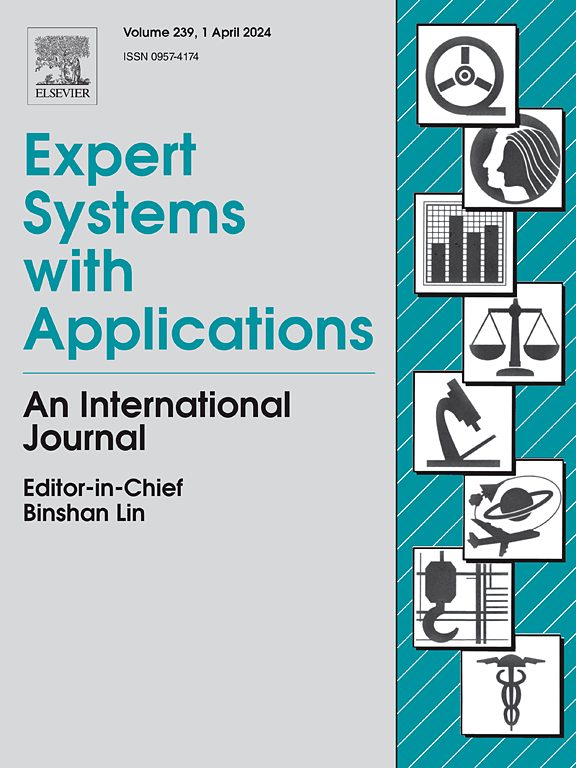Spatial spiral tube multi-roller bending: Accurate axial prediction utilizing AWPSO-FECAM-LSTM framework
IF 7.5
1区 计算机科学
Q1 COMPUTER SCIENCE, ARTIFICIAL INTELLIGENCE
引用次数: 0
Abstract
The multi-roller bending (MRB) process, characterized by its high stability and flexible mold adaptability, is widely employed in the bending forming of spatial metal tubes (such as spatial spiral tubes (SSTs)). However, due to the fewer mold constraints of the already bent-formed section, the bent tube exhibits irregular axial springback, resulting in uncontrollable axial deviations. To improve forming accuracy, this study proposes a novel AWPSO-FECAM-LSTM framework that predicts the axis coordinates of the SSTs formed with MRB. The framework incorporates two prediction modes: the Angle-Regulation-Based (ARB) model, which predicts points based on the same angle, and the Segment-Regulation-Based (SRB) model, which predicts points based on the same segment. The FECAM module extracts frequency-domain features, thereby enhancing the model’s ability to capture both temporal and frequency characteristics. Meanwhile, AWPSO optimizes hyperparameters using time-decay inertia weights and adaptive acceleration coefficients. Validated through bending experiments and finite element (FE) simulations, the model achieves a mean absolute percentage error (MAPE) of 0.98% and a mean squared error (MSE) of 0.000042, outperforming baseline models such as PSO-LSTM and vanilla LSTM. The ARB and SRB models collectively enable precise prediction of tube axis coordinates, with progressive prediction modes effectively reducing error accumulation. This framework demonstrates significant potential for real-time compensation in digital twin applications, advancing high-precision manufacturing of spatial metal tubes.
空间螺旋管多辊弯曲:利用AWPSO-FECAM-LSTM框架进行精确轴向预测
多辊弯曲(MRB)工艺具有高稳定性和灵活的模具适应性,广泛应用于空间金属管(如空间螺旋管(SSTs))的弯曲成形。然而,由于已经弯曲成型的部分的模具约束较少,弯曲管表现出不规则的轴向回弹,导致无法控制的轴向偏差。为了提高成形精度,本研究提出了一种新的AWPSO-FECAM-LSTM框架,该框架可以预测MRB成形的sst的轴坐标。该框架包含两种预测模式:基于角度调节(angle - regulation - based, ARB)模型,基于相同角度预测点;基于段调节(segment - regulation - based, SRB)模型,基于相同段预测点。FECAM模块提取频域特征,从而增强模型捕获时间和频率特征的能力。同时,AWPSO利用时间衰减惯性权值和自适应加速度系数对超参数进行优化。通过弯曲实验和有限元仿真验证,该模型的平均绝对百分比误差(MAPE)为0.98%,均方误差(MSE)为0.000042,优于PSO-LSTM和vanilla LSTM等基准模型。ARB和SRB模型共同实现了管轴坐标的精确预测,渐进预测模式有效地减少了误差积累。该框架在数字孪生应用中显示了实时补偿的巨大潜力,推动了空间金属管的高精度制造。
本文章由计算机程序翻译,如有差异,请以英文原文为准。
求助全文
约1分钟内获得全文
求助全文
来源期刊

Expert Systems with Applications
工程技术-工程:电子与电气
CiteScore
13.80
自引率
10.60%
发文量
2045
审稿时长
8.7 months
期刊介绍:
Expert Systems With Applications is an international journal dedicated to the exchange of information on expert and intelligent systems used globally in industry, government, and universities. The journal emphasizes original papers covering the design, development, testing, implementation, and management of these systems, offering practical guidelines. It spans various sectors such as finance, engineering, marketing, law, project management, information management, medicine, and more. The journal also welcomes papers on multi-agent systems, knowledge management, neural networks, knowledge discovery, data mining, and other related areas, excluding applications to military/defense systems.
 求助内容:
求助内容: 应助结果提醒方式:
应助结果提醒方式:


